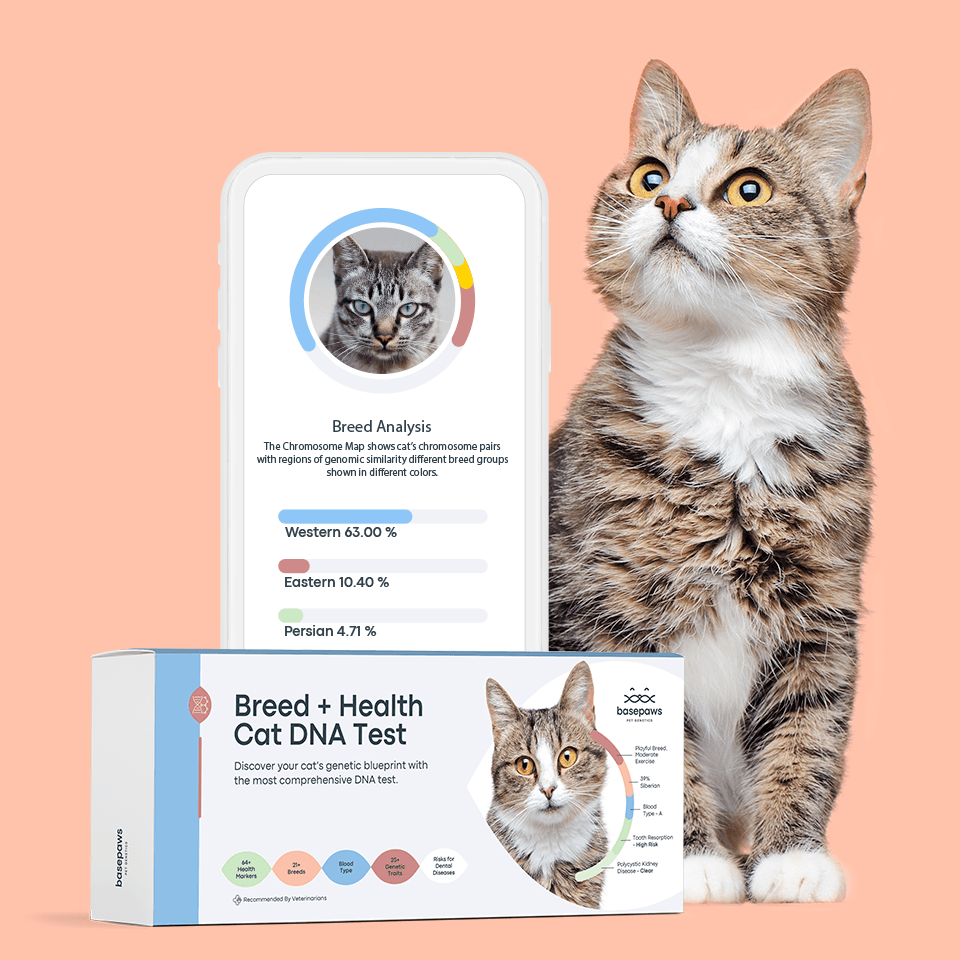Basepaws screens for this disease plus 64 other health markers


Basepaws screens for this disease plus 64 other health markers


Every tooth is composed of a root canal (containing nerves, blood, and lymphatic vessels) and bony substances called dentin and enamel. When a cat suffers from tooth resorption, the dentin of the affected tooth progressively erodes. Unfortunately, tooth resorption is relatively common, affecting 20-60 percent of all cats and over 70 percent of cats over the age of five.
Usually, a light pink defect may be identified in the tooth where it meets the gums. However, by the time this defect is noticeable the took has already suffered significant damage. These defects can vary in severity from small lesions at the gum line to defects in the enamel of the crown of the tooth. Cats suffering from tooth resorption may be irritable, reluctant, or unwilling to eat, or may turn their head to the side while eating.
Veterinarians will diagnose tooth resorption in cats by looking at the mouth and teeth for lesions, probing those lesions as well as examining X-rays of the head and jaw.
To treat tooth resorption, veterinarians will work to manage pain for the cat as well as prevent the condition from worsening. They will also work to restore the affected tooth or teeth to their normal function as much as possible. In some cases, they may want to extract the affected tooth, or remove the crown of the tooth.
Recommended by top vets with decades of experience
21 breeds
64 genetic health markers
50 genetic trait markers
